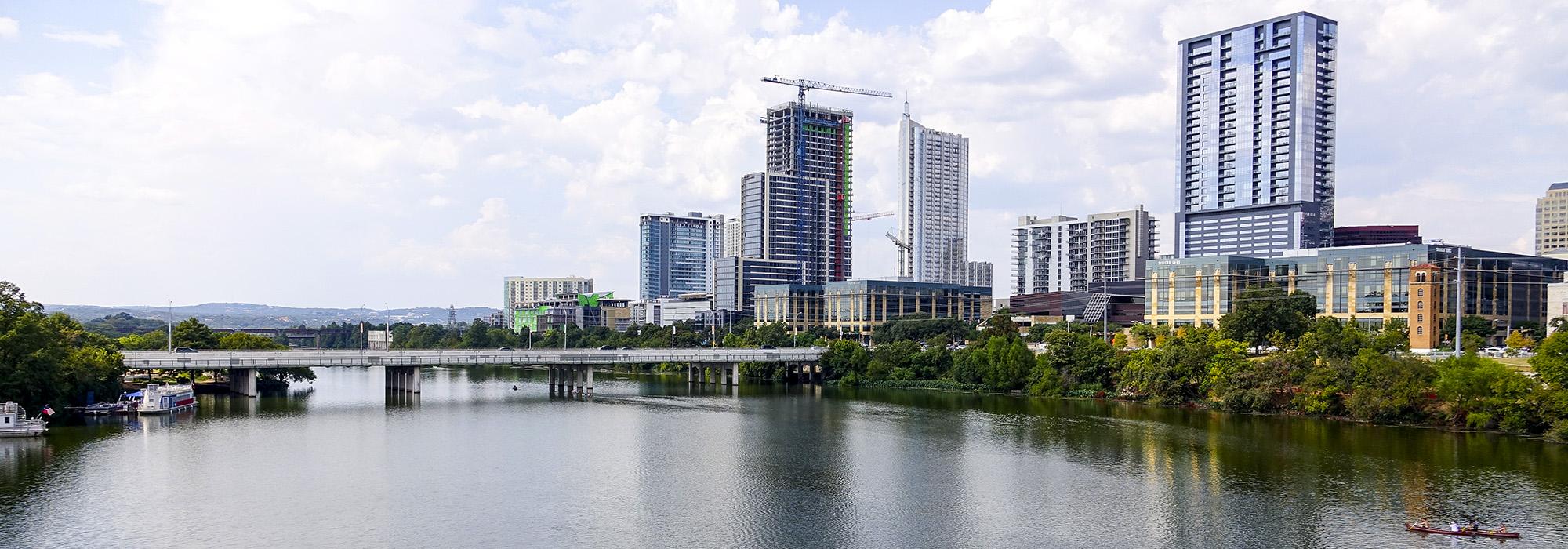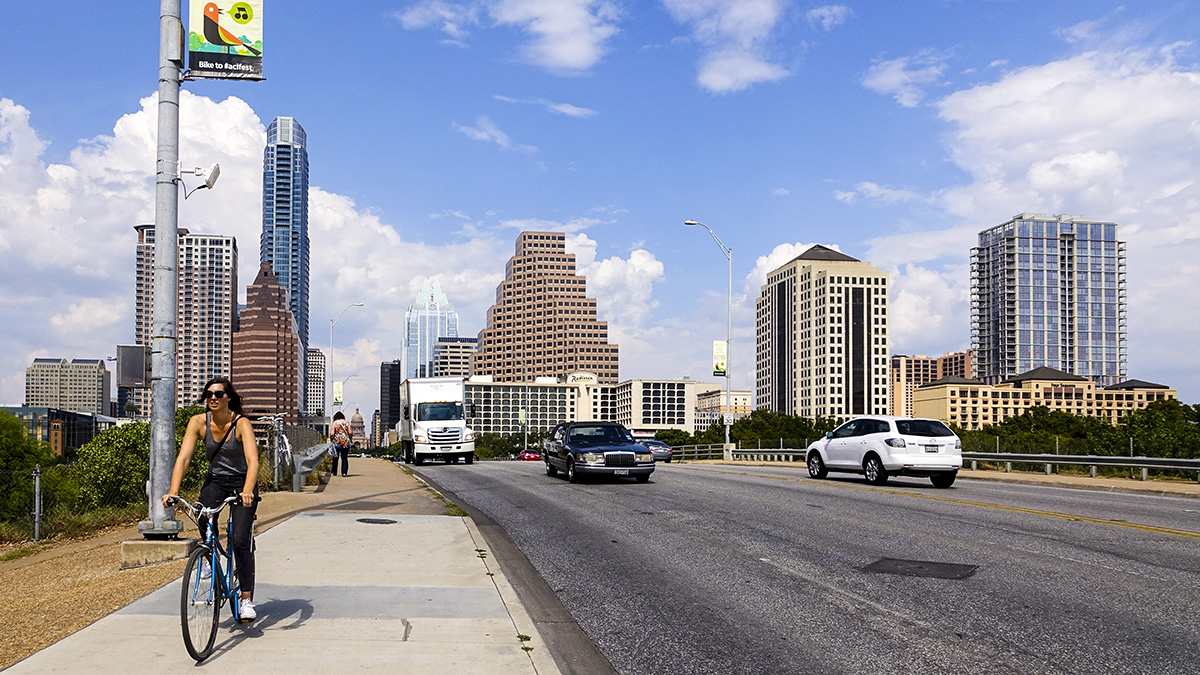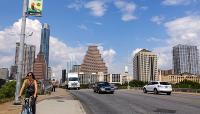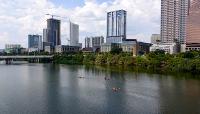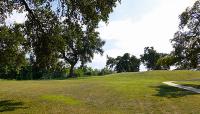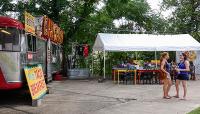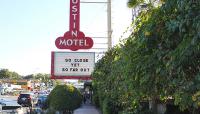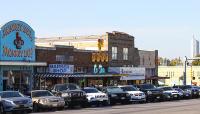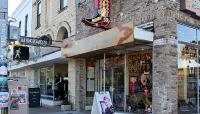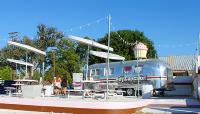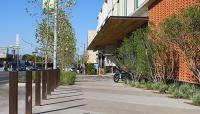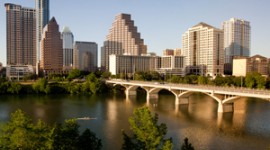Landscape Information
Although Congress Avenue, stretching from the Texas State Capitol to the Colorado River, was well-established as a commercial district as early as the 1840s, its axis south of the river was not extended until 1852. Before that time, those who arrived at Austin from the south were forced to cross the river via a ferry at Waller Creek on the east edge of town, or at Shoal Creek to the west. In 1846, James Swisher purchased property on the south side of the river and, in 1852, granted the county permission to construct a road (from San Antonio) through his farm. That same year, he established a ferry crossing that connected that road with Congress Avenue.
In 1869, the first bridge in Austin to cross the Colorado River was established near Congress Avenue. That bridge was destroyed in a flood and another was constructed in 1884, this time at Congress Avenue. Swisher’s son subdivided his father’s land, reserving a 120-foot-wide street on axis with the Capitol and naming several cross-streets for members of his family. In 1910, the iron bridge was replaced with a concrete one, permitting electric streetcars to finally span the river, bringing residential and commercial development. South Congress was paved in 1931, and increased automobile traffic was accompanied by the construction of tourist camps, restaurants, and service stations. Flourishing into the 1960s, South Congress’s prominence waned in the 1970s as travelers accessed Austin via Interstate 35. In recent years, South Congress Avenue has witnessed a revitalization, especially along the three-mile stretch extending south of the Colorado River to Ben White Boulevard.



